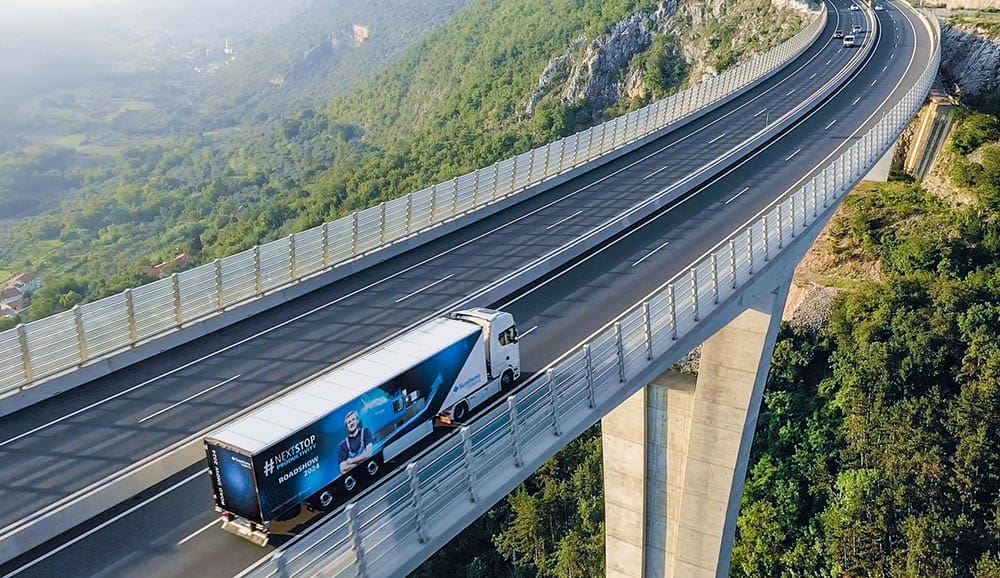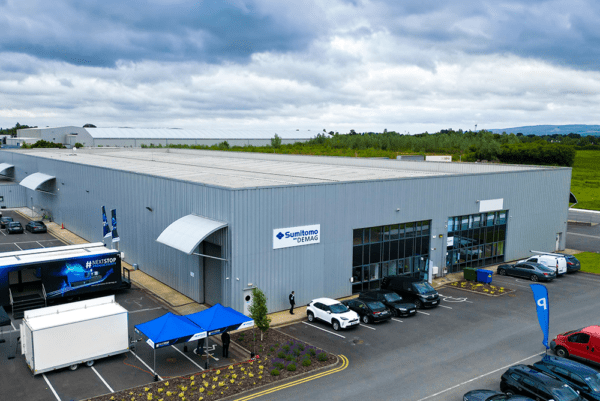
TCO Tipping Point: Revealing the Real Value
|
Getting your Trinity Audio player ready...
|
Cost pressures are frequently cited by companies as a reason for not investing in new machinery. Put off by the upfront price tag, many persist with tried and tested systems. But this can often be at the detriment of long-term performance and profits. Ashlee Gough at Sumitomo (SHI) Demag UK reviews the tipping point when injection moulding machinery loses its value, becomes financially unviable to maintain, and can hit you where it hurts most… on the bottom line.
Let’s face it, we’ve all learned the ‘get what you pay for’ lesson the hard way. It is a universal and age-old dilemma. We want to pay less. But equally, we want a product, service or experience to deliver more.
By nature people are wired to choose cost over value. Yet, by flipping this narrative, value can actually save you money and make you more. It is understandably a hard concept to grapple with. But when we start to really analyse the cost of ownership in full context, what is the real value to you and your business? What results would you see, and when?
What’s your worth?
Warren Buffet famously said: “Price is what you pay; value is what you get.” Although he was applying this statement to stock investments, it was still money driven. In the case of fast-paced manufacturing, the same proclamation rings true. When quality and speed underpin commercial success, reliability is paramount. Investing in new equipment yields direct benefits through lower service requirements as well as higher quality parts and greater output.
Calculating the real value in polymer processing really comes down to machine reliability, looking beyond the explicit costs and weighing in all the likely expenses you may incur across the lifespan of your equipment.
Sumitomo (SHI) Demag estimates that there are currently 15,000 injection moulding machines in the field throughout the UK and Ireland. However, these are only being replaced at an average of 200 to 250 new machines per year. Although many moulding machines can last 20+ years, the value question moulders should ask themselves is whether a machine that’s older that 20 years is economical to run?
Avoid circling the downtime drain
For most processors, downtime is the single largest source of lost production time. Every product that comes off the line after processing and finishing has a value attached to it.
Unplanned downtime is the biggest drain. When unplanned downtime occurs, no value is being produced. Yet, operational overhead costs continue to grow – directly impacting the bottom line.
Whatever machine architecture you opt for, reliability will, to a large degree, be dictated by build quality. Additionally, equipment that is poorly maintained will likely break down more frequently. This impacts quality, as well as productivity and Overall Equipment Effectiveness (OEE).
Adopting a ‘run to failure’ mindset can be risky. Especially when customer schedules and stock holdings are so reliant on quick, seamless component deliveries.
Make reasonable rationalisations
Reliability can be notoriously difficult for a processor to quantify. It really does depend on cycle time, process demand (materials processed, quality of tooling, tool weights, number of functions utilised etc.,) and whether the machine is properly and regularly maintained.
It might sound obvious, but the single biggest thing users can do to ensure machine reliability and longevity is to carry out the service work that is highlighted on the machines’ HMI, or in the instruction manual. Planned maintenance invariably has a lesser impact on line efficiency than unscheduled downtime caused by a failing part.
Until recently, machine manufacturers would recommend set intervals to conduct certain tasks e.g. oil changes or lubrication. Using machine data such as loads, cycle times etc., recommendations can now be adjusted and scheduled according to usage – providing a far more customised and responsive plan than a traditional ‘fixed’ approach.
Electric machines now have even more inbuilt data gathering capabilities. Parameters such as machine acceleration and deceleration and forces and motor duty are all checked via sensors, which provides a more detailed and complete optimisation picture.
Find the middle ground
Evaluating the relative merits of cost versus value is a balancing act. It also requires understanding economies of scale and where trade-offs might support or compromise seemingly sound financial decisions.
By discerning which costs are truly significant, processors can make better and more informed decisions about equipment investments.
Relevant costs are future-oriented. These are the ones that affect future expenses and revenue, and can change as a result of a decision. Irrelevant costs (also known as sunk costs) on the other hand have already been incurred and cannot be recovered, for instance machine depreciation. Hidden costs are those that are omitted intentionally or otherwise, and can add up over time. “This is why TCO is so important as an equation, as it considers all of these direct and indirect costs,” reports Ashlee Gough.
One of the best ways to make an informed purchasing decision based on value is to ask yourself these four questions:
- 1. What production issues will this new machine solve for me and how does this fit with my overall business strategy?
- What are measurable results? And can I compare my existing process like-for-like and run a tool trial on the machine I am considering?
- What additional effort, or features, do I need to gain these results and are there any hidden costs?
- What service and support capabilities are offered by the OEM, e.g. training, process support, optimisation and energy consumption field studies, locality of engineers and target response times versus KPIs.

High-end machines naturally deliver value-add processing features. But what if you are a mass technical moulder that doesn’t require this panoply of offerings? By focusing on all-electric, Sumitomo (SHI) Demag grasps that best value comes from offering a full gambit of choices. It’s why the company is reviving its most popular series in history – the IntElect X-tra. Available in 100, 130 and 180, manufacturers can now benefit from the IntElect elite performance, with a direct drive platform that offers improved efficiencies and responsiveness, the stability and repeatability of electric drives, and parallel functions that can significantly improve productivity. Without paying for features that aren’t warranted.
Short-term thrift is rarely worth it. Instead, try to base your machine decision on reliability and selecting technical features that actually add value. There’s also a hefty element of psychology attached to cost and perceived value cautions Ashlee. “When people feel valued they tend to push themselves harder. The same can be said for machines. Cost is the price; Value is the benefit. The question is, which one will exceed your expectations?”
The European productivity roadshow arrives in the UK and Ireland this July. Discover how manufacturing counterparts are adopting a coordinated approach to increase value and foster sustained productivity growth. View how digital tools are helping to deliver better processing control, less machine downtime and are addressing spiralling costs. Setting up in Athlone, Limerick, Silverstone and Glasgow, to attend this unmissable event register at https://roadshow.sumitomo-shi-demag.eu/register or contact Ashlee Gough or Dave Raine direct.
Read all of Sumitomo (SHI) Demag’s latest news here.






